Listen to this article:
Thousands of people get certified to teach yoga each day. The good news is, even though the market is saturated in some areas, we all internalize, interpret and ultimately deliver what we’ve learned differently.
Therefore, no two yoga classes you’ll take will ever be the same.
As yoga instructors, we are constantly challenged with coming up with new sequences and content to stand out in the crowded landscape. This can be exhausting. It takes continual practice, patience, and refinement week over week.
To create a yoga sequence is to create a work of art. It’s not easily accomplished on a whim. The approach you take is crucial to the success of your class. Selecting each element with thoughtful and mindful consideration is a great place to start. Sharing this masterpiece is one of the greatest gifts of teaching… It has the ability to change people’s lives!
But even with this incredible opportunity, come the unique challenges of sequencing.
The purpose of this article is to educate you on how to intelligently sequence a yoga class. This article is directed towards yoga sequences for teachers, but yoga students looking for inspiration in their home practice will also benefit.
I will show you my tried and tested formula on how to sequence a yoga class. I’ll provide posture and transition examples, and you will learn more ideas to layer on top of a linear sequence. You’ll walk away able to easily integrate what you’ve learned into your own class all in a safe and effective manner.
Whew.
Are you ready to dive in? Good. Me too. 🙂
Pin me 🙂 Then keep reading!
Contents
General tips for sequencing yoga classes
The Basics Are The Bomb
Don’t overdo it. Beginner and seasoned practitioners alike can benefit from returning to the foundation of the practice. If you’re a newer teacher, just focus on a beginner yoga class sequence.
Practice Your Sequence
This ensures that what you are delivering to your students is conveying what you want them to experience physically and mentally. It will also give you more confidence teaching.
Free download: 100 Niche Ideas for Yoga Teachers
Download nowAssess Your Students
Do you have an idea of the type of student attending your class? i.e. elderly, athletes, recovering addicts, etc.? Knowing this information can help guide what direction to take your sequence.
Practice with your playlist
If you teach with music, be sure to have your music on while practicing. Subtle cues in the music will help you know if you need to speed up, slow down, or just savor the moment. I recommend learning how create the perfect yoga playlist, it’s a powerful way to impact your students.
Consider a theme
High level themes for your classes can help guide your sequence. Here are 25+ theme ideas to guide your next class.
Alright let’s get into it…
How to Create a Yoga Sequence
If you’re wondering how to build a yoga sequence, here’s my go to method. Most yoga sequences are linear, meaning one posture follows another in a sequential manner. Linear classes are taught in a logical way starting with less challenging, moving to more challenging and returning to less challenging before savasana.
Free download: 25 Ways Yoga Teachers can Earn More Money
Download nowWhen I sequence, I typically start with a linear formula and layer on from there. This is just one way to sequence a yoga class. I’ll walk you through this way today.
My Anatomy Of A Yoga Class
The sections in my basic vinyasa yoga sequence are:
- Grounding (5-10 minutes)
- Warm Up/Integration (10-15 minutes)
- Sun/Moon Salutations (15 minutes)
- Standing/Balancing Postures (20 minutes)
- Seated/Supine Postures (10-15 minutes)
- Savasana (10+ minutes)
Grounding (5-10 minutes)
This is where we drop into the practice and start class. Some people call this a yoga class opening sequence. Essentially, your goal is to create a space to invite in presence and acute awareness of breath and body. Some instructors guide a short meditation or breath work.

Recommended Grounding Postures:
- Child’s Pose (Extended, Traditional)
- Seated Pose (Sukasana, Hero’s Pose)
- Supine Pose (Savasana, Reclined Bound Angle)
Warm Up/Integration (10-15 minutes)
After getting grounded on our mats, it’s important to physically warm up our body for more vigorous postures to come.
Recommended integration postures:
- Cat/Cow Variations
- Gentle Core Work (Swimmers, modified side plank)
- Seated Lateral Bends
- Seated Gentle Twists
- Thread the Needle
Sun/Moon Salutations (15 minutes)
Introduce sun or moon salutations and link each movement with breath.
Sun Salutations are the most common way to start a yoga practice because they are heating and stimulating. This posture combination stretches and strengthens all major muscle groups.
Free Course: Create a Yoga Website You'll Love
(7 steps)
Enroll for Free
Moon Salutations are cooling and quieting. Choose Moon Salutations if you’re leading a slower flow.
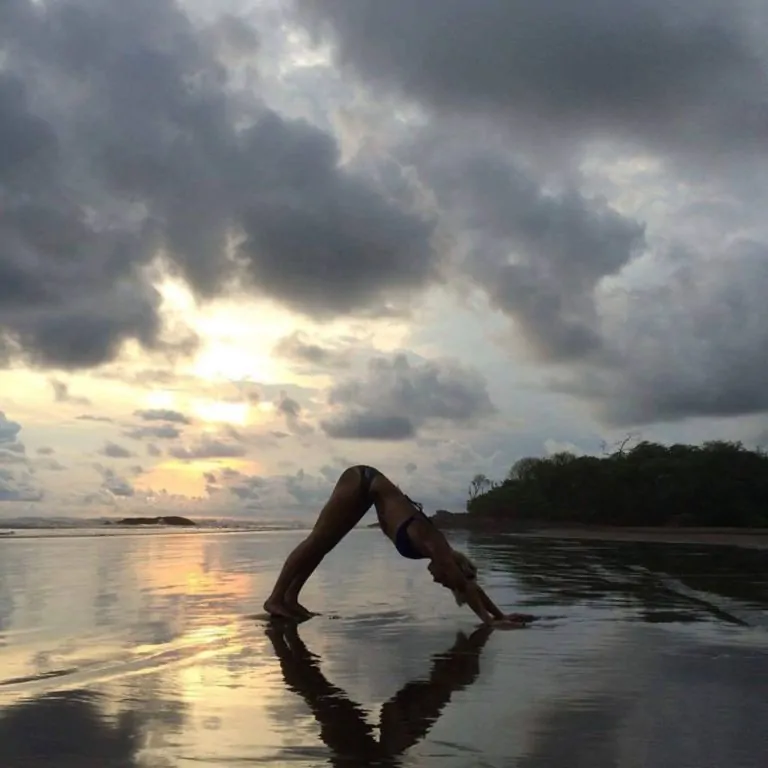
Recommended Sun/Moon Salutation Postures:
- Mountain Pose (Tadasana)
- Forward Fold
- Vinyasa (if you’re leading a vinyasa flow sequence)
- Downdog
Standing & Balancing Postures (20 minutes)
Once you complete salutations, your students are ready to be on their feet moving in a more active way. Now is a great time to come up with series that include warriors, lunges and other standing postures. Mix in balancing postures into the flow, or leave them separate.
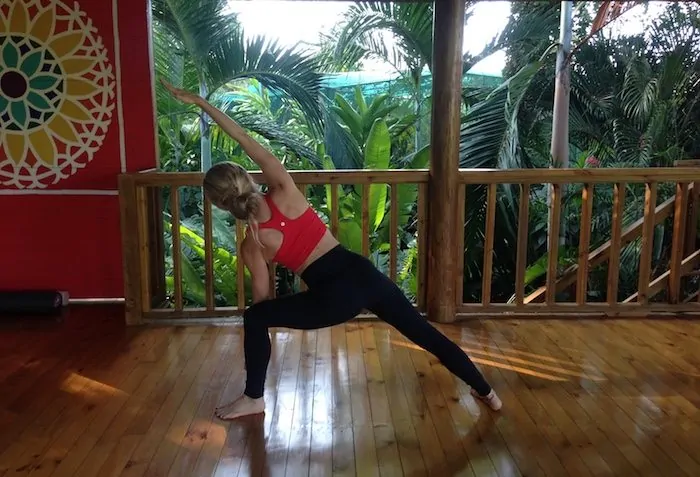
Recommended Standing/Balancing Postures:
- Warrior 1, 2, 3
- Crescent Lunge
- Wide Legged Forward Fold
- Tree Pose
- Eagle Pose
Seated Yoga Sequence / Supine (10-15 minutes)
Time to begin to slow the body back down. Since the body is super warm, hold deeper stretches and spend more time in each posture. These postures will begin to cool the body down, preparing for savasana.
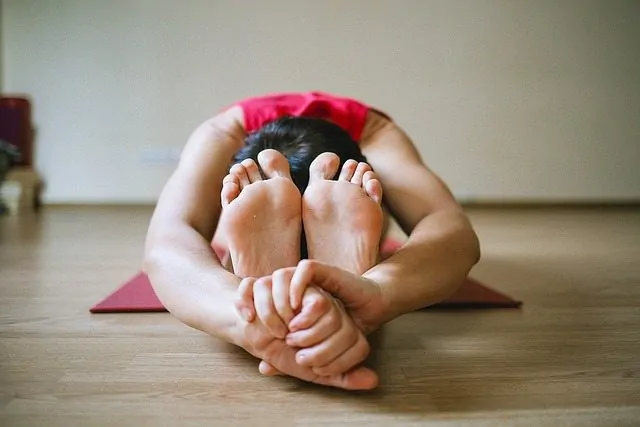
Recommended Seated Postures:
- Seated Spinal Twist
- ½ Pigeon Pose
- Seated Forward Fold
- Bridge/Wheel Pose
- Supine Twists
- Happy Baby
- Supta Badha Konasana/Reclined Bound Angle Pose
Savasana (10 minutes or more)
Final resting posture. You may offer to invite back in their intention for class or read a quote related to your theme. Otherwise, silence is golden to allow space for their own experience.
Example Types Of Classes & Yoga Sequence Ideas
Choose one or all of these things to use as you work through creating a yoga sequence. An intelligent class is not simply a sequence of yoga asanas, consider breathwork, themes, dharma, etc.
Learn to Create a Website for Your Yoga Business
Enroll for FreeThis is not an exhaustive list, but rather one to get you inspired. If you teach a vinyasa style class, just know there are endless yoga flow sequence ideas… Ranging from a power vinyasa to a slow flow vinyasa yoga sequence.
Breathwork (Pranayama)
Pranayama, or breath work, is the foundation of any yoga practice. Starting class with a short breathing exercise will allow your students to cultivate awareness and presence in their body and mind.
You can remind your students throughout the entire class to return to their breath. This added layer of pranayama, will assist them with being more present.
Lion’s Breath, Alternate Nostril breathing, Sama Vritti, Kapalabhati, and Ujjayi are just some of the styles of pranayama you can include at any point during your sequence. I enjoy adding Lion’s Breath during Star Pose, and Kapalabhati during Hero’s Pose.
Beginner yoga sequence for teachers
Just because you enjoy complicated yoga sequences in your personal practice doesn’t mean you should attempt to teach this way. Most students enjoy and benefit from more straight forward sequences where they can focus on the present moment instead of trying to keep up.
A beginners yoga class sequence might include fewer postures repeated more frequently. Build the sequence in a way that lets your student intuitively move from one position to the next.
If you’re looking for ideas, most bigger yoga studios have beginner yoga sequences that rarely change. Take a few beginner classes around town for inspiration.
Pro tip: a yoga sequence for beginners (with options to modify) allows the teacher to focus more on the space their holding, giving dharma, and adjusting students.
Theme
Before you build a sequence and select postures, choose a theme. Select one theme to center your class around. This can be a quote, a word, a part of the body, etc. Consider your theme the ultimate masterpiece your sequencing artwork. This will help create a general focus for your class. Every posture and transition should embody the theme in some way.
How you deliver the theme is as important as the theme itself. Just as in asana practice, deliver your message with balance and integrity. It can be easy to overdo it, so be sure to pick certain places throughout the sequence to drop nuggets of your themed wisdom. I recommend at the very least, 3 times: beginning, middle and end.
By having a clear and simple theme, both you and your students will be able to practice with purpose and intention.
Select An Apex Pose or Set of Postures
Most yoga classes have an apex pose, or a peak posture that the class builds upon from the beginning. To do this safely, ensure you choose postures during integration that warm up and strengthen the body in preparation for the apex pose. The apex pose is the most challenging posture of the class.
If you don’t want to select one apex pose to work towards, another idea is choosing postures that open up a specific part of the body. i.e.: hips, shoulders, hamstrings, heart.
Tip: Integrate your theme into the postures. For example, if you’re theming your class around self-love, a natural selection of postures would include heart openers.
Energizing or Relaxing Class Sequence?
Each yoga posture can elicit different energetic effects in your students. Are you teaching a power vinyasa class or a slow flow yoga sequence?
As a general rule, moving the spine forward (think backbends) or inverting, are generally more stimulating. Flexing the spine towards forward bending (think folds and hip flexion) are more relaxing. Whereas twisting can be considering balancing.
If you’re going for a relaxing class, add a longer seated yoga sequence.
Lastly, even changing the order of postures in a class will deliver a different effect on your students. Take this into consideration as you teach targeted classes for students with various injuries or mental and emotional states.
Frequently Asked Questions:
How should I prepare a corporate yoga sequence?
First, consider your students. From my experience, most will be beginners and they’ll be taking a break from work which means the class has to be quick. If you want to keep your students coming back, make sure it’s fun, beginner friendly, and keep the woo woo to a minimum.
I can just picture a bunch of accountants (no offense) that get scared away from yoga because the teacher talked in Sanskrit 90% of the time while delivering astrological readings and “tuning everyone’s chakras.” In other words, keep it basic. Maybe even consider using chairs as props if you don’t have a dedicated studio space or much time.
Should I write down my sequences?
Short answer is: yes. Practicing with a written yoga sequence is a great idea when you’re first developing a sequence or if you’re a newer teacher.
Protip: Keep a notebook with all your yoga sequences and some notes about them. This way you can refer back to older classes which saves time when you need to map out a new class. What was that cool mandala class I thought for the summer solstice in 2014?!
Parting Words: Practice! Practice! Practice!
An easy yoga sequence to teach is one you’ve practiced. Get to know how each of the postures and transitions feel in your own body. You’ll quickly begin to realize where you can adjust your sequence to flow more fluidly. If you have a yogi friend you trust, practice the sequence on them so you can try different cues to get them in and out of postures. Practice as much as you can – you will feel so much better feeling prepared.
Lastly, don’t put so much pressure on yourself. There are benefits to repeating sequences so no need to create a new one for every single class. Just be yourself, there is no best yoga sequence anyways 🙂
What am I missing? What tips can you offer for building a yoga sequence? Do you have any yoga class sequence ideas to add?
Did you enjoy this article? Pin me!


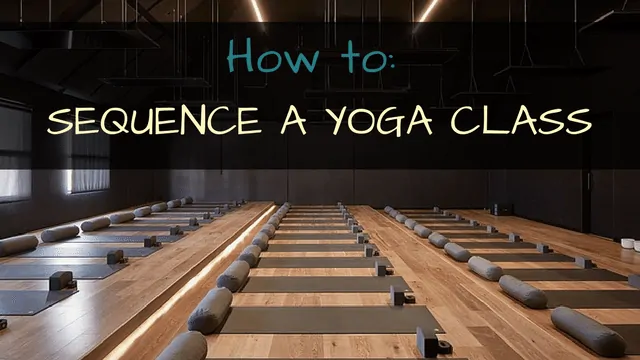

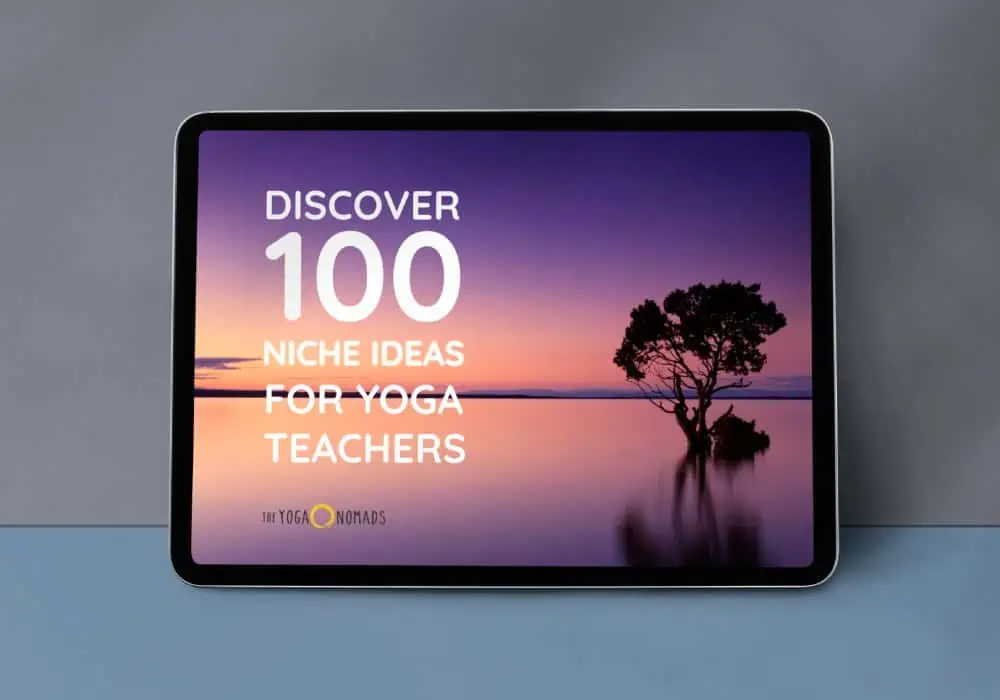
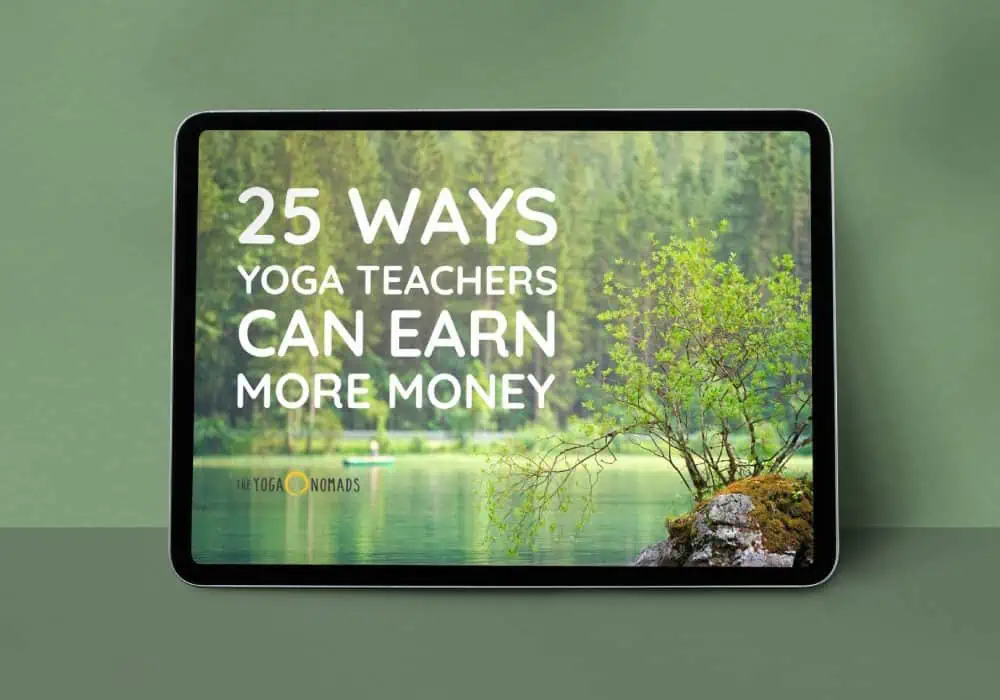
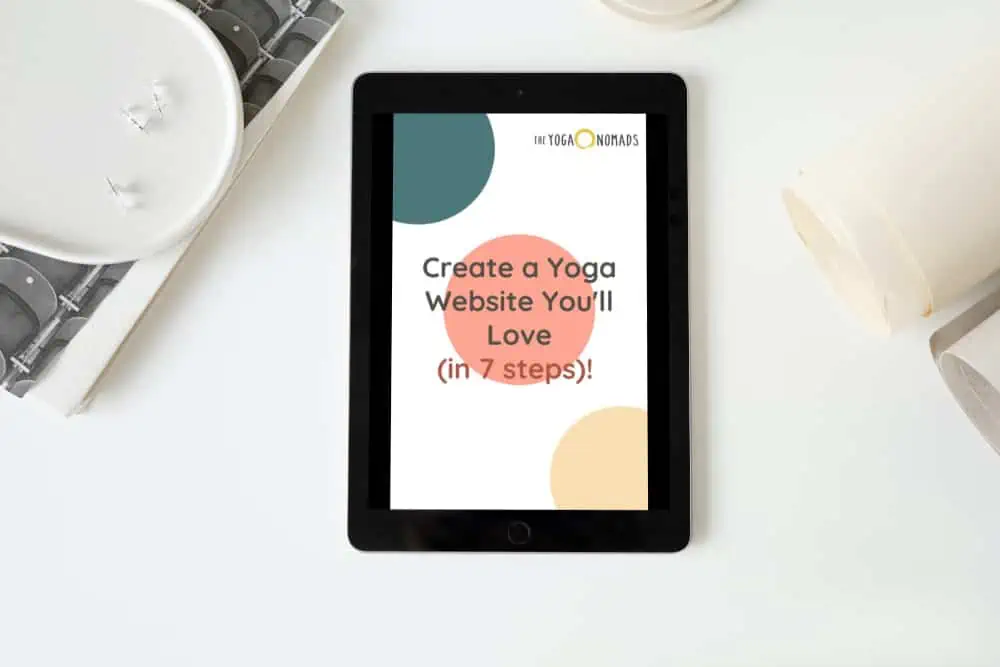
Thanks! Great tips for me as I’m just about to do yoga teacher training and have been wondering how I will sequence classes. Will bookmark this site :).
Thank you, very helpful tips.
Thank u. very helpful sequencing and your tips
Thanks so much! I needed this!
Thanks a lot for this article. It’s really helpful.
Thanks for writing this helpful article! I truly appreciate it.
Thank you for the helpful advice;)
I am so grateful to have found this article! Thank You (: As a new yoga instructor putting together a class can be easily over thought, you reminded me that there is NO perfect sequence. NAMASTE
*Kelly*
Actually I was always stressful about what to teach for the next classes and many questions came up in my mind (do the students like those sequence? Do they enjoy my class? Are these lesson plans okie? is it good? Is it too boring? ….) And I always tried to make every single lessons different but they were not always good.
After reading this article, get your advices, write down your ideas, I feel more confident and trust what I’m doing. Thank you for inspiring me a lots!
Wish you heath and peace!
Namaste
Thank you so much for always writing such useful and informative articles, and for being an inspiration to yoga teachers around.
Peace and love from a new Yoga teacher that is trying to find her voice:)
Namaste!
DagmarDharma
This article is what I needed. I’m very nervous about putting together a sequence to finish my teacher training course. Thank you.
Thank you. This is very helpful
Wonderful information! Thank you!
Thank you so much i much needed this